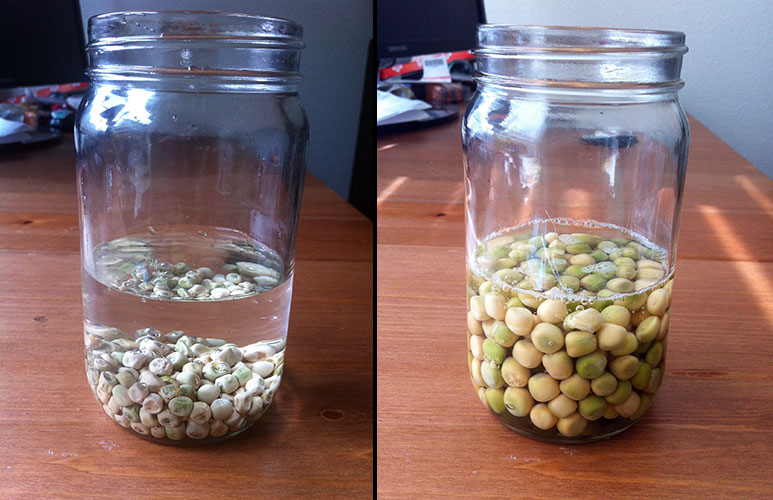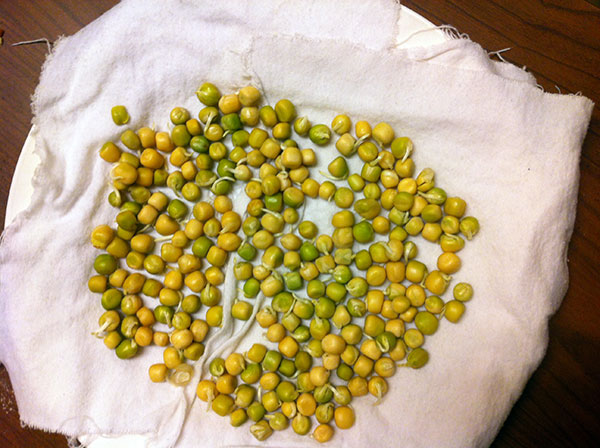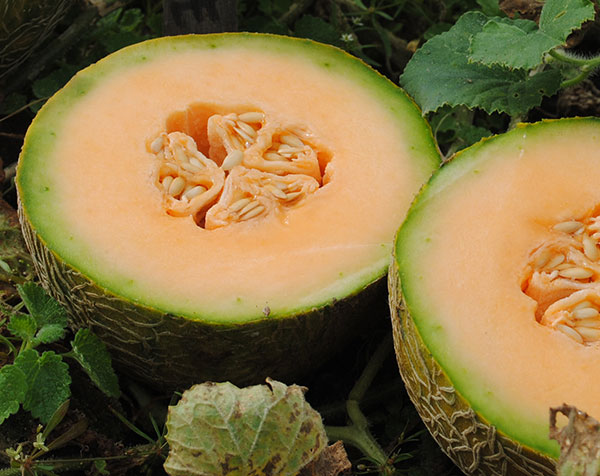
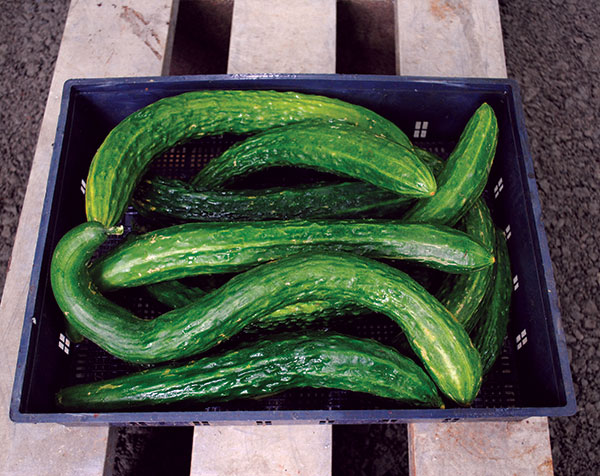
Left: Edisto 47 muskmelon, Right: Suyo Long Cucumber. Both varieties produced abundant, excellent quality fruits, even with severe downy mildew pressure.
The first defense against plant diseases is to choose resistant varieties: rather than waging war with biological or chemical controls, we can avoid problems before they begin!
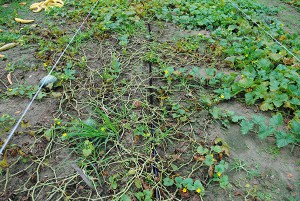
We are so thankful to Edmund Frost, seed grower at Twin Oaks Seeds, for sharing with us the results of his downy mildew cucumber trial and downy mildew melon trial from last summer. And we are pleased to announce that two SESE varieties were among the top performers for excellent flavor and yield in his trials: Suyo Long cucumber and Edisto 47 muskmelon.
Summer 2013 was a terrible season for downy mildew throughout the Southeast, but that also made it ideal for studying downy mildew resistance. We have updated our 2014 Southern Exposure Catalog with the results of the Twin Oaks trials, indicating resistant varieties as well as varieties that were not as resistant as expected.
Over time, a seed line can lose resistance to a disease: we need more knowledgeable seed growers who can both evaluate varieties for disease resistance and do the selection work to keep a variety resistant.
Both Suyo Long cucumber and Edisto 47 muskmelon are excellent performers in high heat and humidity. Suyo Long is an Asian-type, burpless cucumber, lacking the bitterness of other cucumbers. Edisto 47 is one of our sweetest melons.
The Organic Seed Alliance (OSA) and Southern Exposure partially funded the Twin Oaks Seeds melon trial and Sow True Seeds and OSA partially funded the cucumber trial. We are determined to continue supporting high quality variety trials and selection work.


